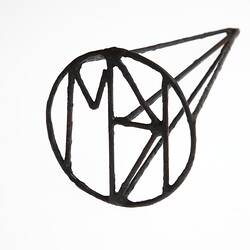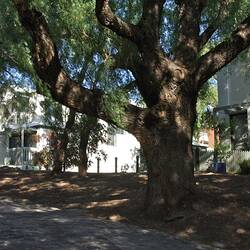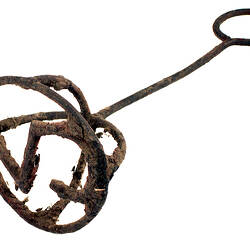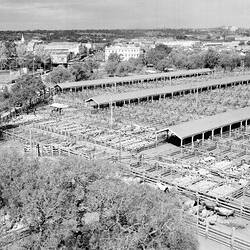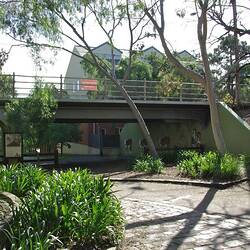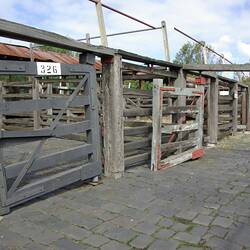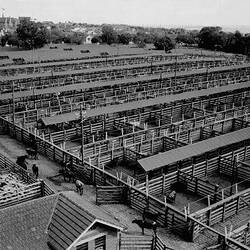Growing up in the neighbourhood of the Newmarket Saleyards offered many experiences considered rare to other inner city children. Around Newmarket the sounds of the country collided with those of the city and children lived with the bellowing of cattle, bleating of sheep and barking of dogs. In the jumble of laneways that was the Saleyards, children observed kelpies as they skilfully headed cattle out towards gates, watched border collies jumping on the backs of errant sheep, chased calves and lambs in the holding paddocks, and swung on heavy wood gates as they banged shut. Children also played in the streets and lanes surrounding the Newmarket Saleyards, often watching drovers moving cattle along the laneways.
Bernard Leunig remembered: "I was born in 1915...in a house that was adjacent to the (Angliss) meat works. Tuesday nights it was nothing for us to walk over to Newmarket after school. We knew the drovers and we'd walk behind the mobs of sheep from Newmarket, helping them, thinking we were doing a great job driving the sheep from Newmarket to Angliss'. And Wednesday night was the big night, that was cattle night and it was a great thing to watch bulls come in. We used to take delight in watching the drovers. You can never see it now because of the modern transport of stock on trailers. In those days we had the real drovers on horses, cracking their great stock whips, tearing along Ballarat Road from Newmarket to the works, often cattle stampeding." (October 1984, interviewed and recorded by Chris Healy)
References:
Gilbert, Beverley. 2005, The worn stockwhip: tracking down a past, Elton Publications, Mont Albert, Victoria.
Healy, C. 1986(?), The Lifeblood of Footscray: working lives at the Angliss Meatworks, Melbourne's Living Museum of the West, Footscray, Victoria.
More Information
-
Keywords
-
Authors
-
Article types

